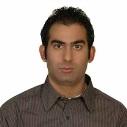
Morad Eghbal
Morad Eghbal, University of Texas, USA
Title: Tandem modulation for W-band OCDMA radio-over-fiber system
Biography
Biography: Morad Eghbal
Abstract
Introduction of services and applications that require higher bandwidth and augmented bitrates are dramatically increasing. Services such as live broadcasting and video streaming demands a larger bandwidth along with minimal latency and enhanced reliability. Thus, the mainstream of the future mobile communication is governed by how much bandwidth can be dedicated for such services and therefore how the capacity of the network can be improved to keep up with the growing demand for bandwidth. An effective method to increase the capacity of a network is to migrate to higher frequency bands. Millimeter-wave region has promising features that can accommodate higher capacities with working frequency in the 57-64 GHz (V-band) and 75-110 GHz (W-band) regions. Also, they offer enhanced security based on their narrow beam-width antenna and higher attenuation in the free space propagation making them only available across their designated coverage. Higher attenuation can be overcome by introduction of radio-over-fiber techniques in which millimeter-wave signal (radio frequency wave) can be transmitted through optical fiber to effectively increase the propagation distance compared to the free space propagation. Therefore, millimeter-wave radio over optical fiber can be an efficient method to transmit millimeter-wave signal to longer distances. In this paper, we propose a W-band optical code division multiplexing access (OCDMA) radio-over-fiber system generated by tandem dual electrode Mach Zehnder modulator (DE-MZM). To increase the capacity, we introduced the optical encoding and decoding with the help of superstructure fiber Bragg gratings (SSFBG). Also, to generate millimeter-wave signal, a tandem DE -MZM driven by signal generators operating at frequency range of less than 30 GHz have been used to decrease the overall cost and increase the stability of the system. The simulation results will be presented. The stability, capacity and reach of the system are improved while the cost and complexity are reduced.

